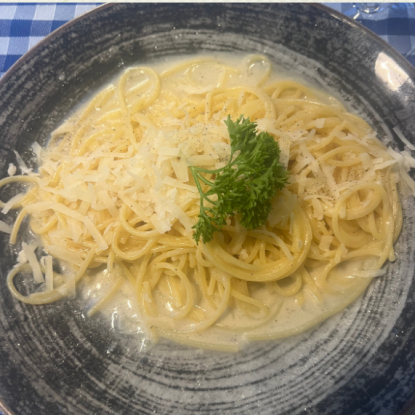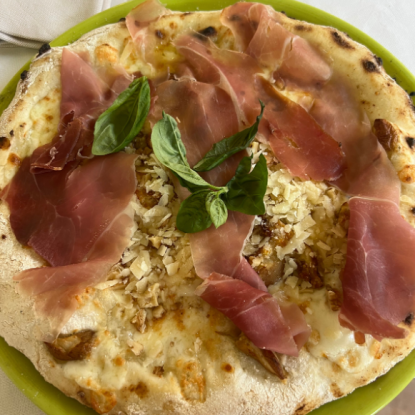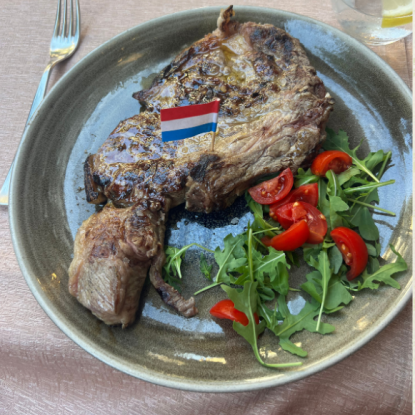Studying Abroad with Celiac and Advocating for Dietary Restrictions in Another Culture
I was diagnosed with celiac disease over six years ago. Celiac disease is an autoimmune disorder that can lead to gastrointestinal issues. To prevent symptoms, it's essential to maintain a gluten-free diet. I've had a lot of practice explaining my needs to restaurant staff, as cross-contamination can still trigger an autoimmune response. Dining out is always a bit of an adventure, especially if the restaurant isn't dedicated to gluten-free options. However, it becomes easier to communicate my needs when both parties speak the same language and understand the relevant allergen protocols and procedures. If you have celiac or other dietary restrictions, know that studying abroad is possible, with some planning and communication.
Gluten-Free in Italy
Coming to Italy, my primary concern was ensuring I could eat safely. There are many resources for individuals with celiac disease or other gluten-free conditions. The Find Me Gluten Free app has been a lifesaver here. Finding celiac influencers or bloggers was also a great resource. I lucked out because Sorrento is a popular tourist destination, and many restaurants have helpful reviews. Before coming, I checked the Find Me GF app and made a list of places that looked safe, tasty, and reasonably priced. With dietary restrictions, it is essential to have a plan and come prepared.
Italy is an excellent country to study abroad in, especially for those with a gluten-free diet. Italy has a high prevalence of celiac and, for years, has had social programs to test school-age children for the genetic marker. There were also social programs to inform people about food allergens, and restaurants have stricter training for their staff on preventing cross-contamination than many other countries.
Language Barrier
I was worried that the language barrier would be an issue; however, all the cities with a lot of tourism are accustomed to English and can usually understand you. Not every Italian person can speak English, but at restaurants, most of the staff will be able to at least point to things on the menu they can do. It is important to practice saying "senza glutine" so that they understand the message clearly.
My tips for ordering food with allergies and speaking to staff, in general, are to know what you are going to say ahead of time to avoid possible confusion due to language differences. English is a second language for many residents of Sorrento. When speaking in English, try to speak slowly and clearly, using common words and phrases. They may not be familiar with slang or regional terms. Their ability to understand you might improve if you use fewer words and are concise.
Keep it concise, clear, and easy to understand. An example phrase to order in a restaurant could look like this: "Caio, I am celiac, I need senza glutine pasta. Vorrie (can I have) the pasta Nerano, with senza glutine pasta, per favore (please)?"
Locals sincerely appreciate attempts to speak their language. Even if it's just Caio and Gracie, it goes a long way. They see it as a sign of respect. It shows you care about them and their cultural background. Some tourists refuse to make an effort. If you are studying abroad, it is beneficial to learn at least some common phrases and incorporate them into your daily conversations.
Sorrento
The city of Sorrento is relatively small; you can walk its length in about 30 minutes. The main street is Corso Italia, which is ideal for walking and features many shops and restaurants. The Piazza is a square that allows cars to drive through, overlooking the road down to Marina Piccola. Most restaurants are located on the block between Corso Italia and the water, just before the square. There are restaurants everywhere you look, and it can be overwhelming.
My Recommendations
- O'Fish (calamari, fried fish, sandwiches) is the one dedicated gluten-free place to eat; it's a must-go for everyone, not just those with gluten sensitivity. They offer fried calamari, fish and chips, and paninis—high-quality fried food, very doughy, which is a rarity. I have never had as good calamari since going gluten-free. Fast and easy, kind staff. They all recognize me and know my order. The only thing that contains gluten is some drinks, so be careful when looking at the Peronis.
- Ristorante Sorrento (serving pasta, pizza, and classic Italian cuisine) offers a wide selection of gluten-free options. Any item on the menu can be modified to accommodate a gluten-free option. It is reasonably priced, so sometimes I go and get a pasta dish and carne, usually grilled chicken. The staff is also very friendly here, and on my second visit, the server remembered that I was gluten-free; they brought me prepackaged gluten-free bread before I asked. I have been many times because the location is convenient on the way back from campus or the water.
- Le Gracie (Pasta, Italian) is a family-run restaurant with traditional menu items. Seating is on the side street or inside. I love their Pasta Nerano, a dish featuring zucchini and cheese. They have allergens clearly labeled, and when I asked questions, they were able to inform me about potential alternatives. As soon as I ordered gluten-free food, they brought me GF bread, which was very nice. It's a great place to go for a nicer meal, and if you're in Sorrento in the summer, it's especially nice to sit in the air conditioning.
- Bar Veneruso (Pasta, burgers, salads, breakfast): An interesting place to eat, during the mornings, one half is open as a café, but at night, the other side opens for dinner service. In the mornings, there are some prepackaged gluten-free sweets that are not found in America, so I have tried a few. Their options for dinner are large, and the staff will help you narrow them down. They feature live music on the outdoor patio and maintain a pleasant atmosphere, attracting many tourists.
- Frankie's Bar (Pasta, pizza, salads, Italian): The menu features clear labels and offers a variety of vegetarian/vegan/dairy-free options. Fun atmosphere and friendly staff. Can make any pasta dish GF. A small place with lots of options; everyone loves Frankie's.
- Amorino (gelato chain): All flavors of gelato are gluten-free (as of now), and they have gluten-free cones. They also have coffee, smoothies, and macarons. They are on the expensive side, they have large portions, and excellent quality gelato. There are two locations in Sorrento, one of which is visible from the main road. They did switch out the spatula when I asked.
- Mò Mò (Pasta, Italian): I love it here; the outdoor seating is perfect for people watching, and the food is delicious. Some of the best pasta I have ever had. Staff are always so kind and welcoming. There is a section labeled "No Glu," meaning it is gluten-free. However, when I asked, they said any pasta dish could be done with GF pasta. Fried menu items are not recommended, but there are many other options available.
- Antonio's (Pizza, pasta, Italian): Up a flight of stairs, you can dine under a lemon grove. Some of the absolute best gluten-free pizza I have ever had. They have a wide variety of local and authentic pizzas that can all be done gluten-free. When asked if it was safe for celiacs, they assured me and were very kind. I had the "Sorrento Style" pizza with candied lemon rind and arugula, and it was exciting. I loved it, but I love lemons a lot. It is almost a requirement to love lemons if you are in this region of Italy. Gorgeous restaurant, a hidden gem. I came back multiple times and tried various pizzas, and was always pleased.



